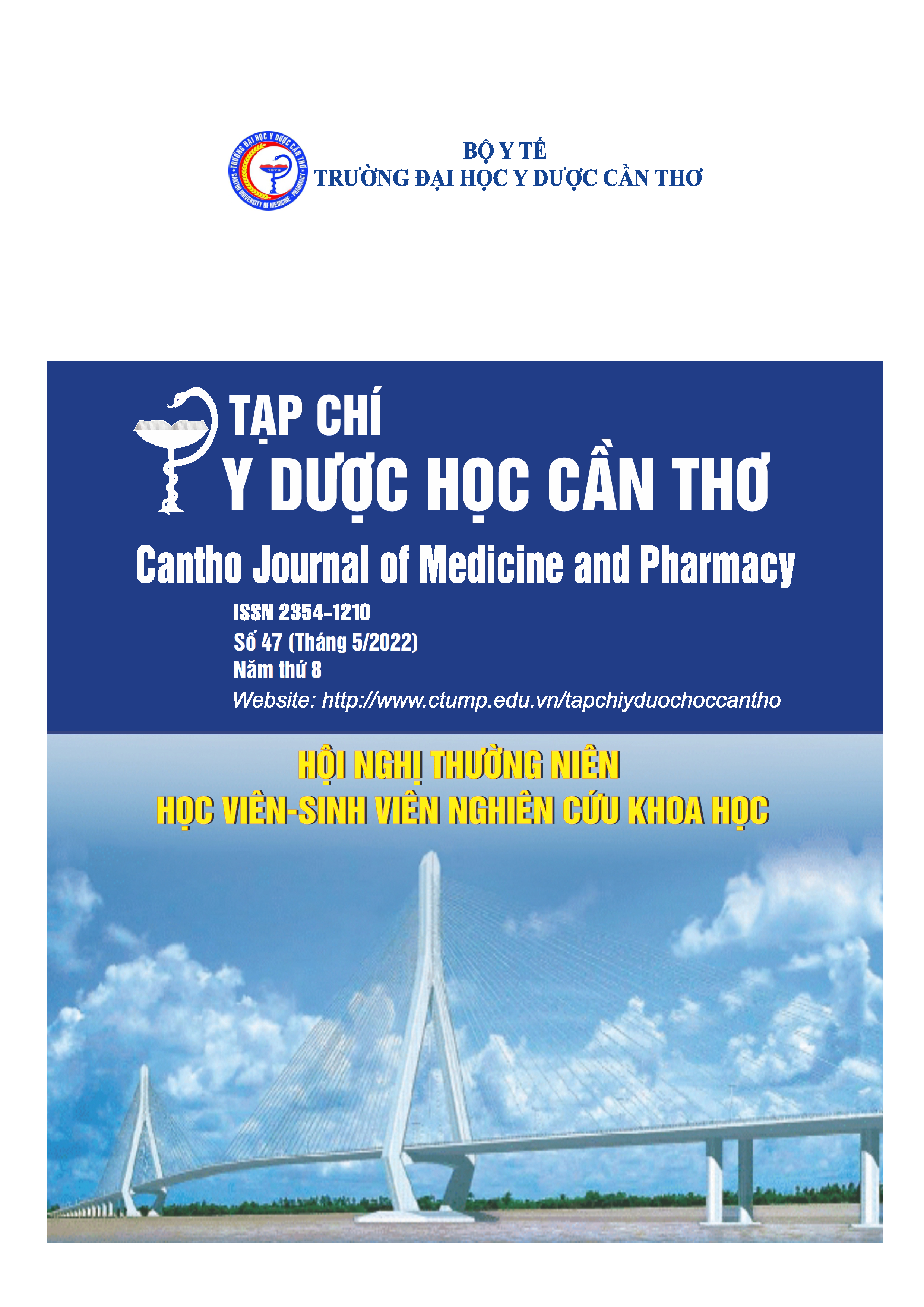Study on dysphagia disorders in acute stroke patients at Can Tho Central General Hospital in 2021-2022
Main Article Content
Abstract
Background: Acute cerebral stroke is a topical issue because of its high morbidity, mortality, and disability rates. Dysphagia disorder is a symptom of stroke leading to aspiration of a foreign body, causing aspiration pneumonia. Detect and control swallowing disorders in stroke patients to improve complications of aspiration pneumonia and problems related to swallowing disorders. Objectives: To determine the prevalence and severity of swallowing disorders of acute stroke patients in Can Tho Central General Hospital from 2021 to 2022. Materials and methods: A cross-sectional descriptive study was conducted on 130 patients diagnosed with an acute cerebral stroke at Can Tho Central General Hospital in 2021-2022. Results: Through a survey of 130 acute stroke patients at Can Tho Central General Hospital, we found that the average age of patients was 65.4±12.42, in which the male/female ratio was 1.6. The majority of patients are in rural areas, 73.8%. The patients with Glasgow scores from 12-14 accounted for 50.8%. The patients with a level of NIHSS from 5-15 points accounted for a high rate of 86.9%, and severe level >15 points had 8.5%. There were 105 patients with a swallowing disorder, accounting for 80.8%; Swallowing disorder with mild degree 58.5% accounted for many, and moderate level 18.5%. There were 29 patients with aspiration, accounting for 22.3%. Conclusion: Evaluate swallowing disorders in patients with acute stroke, make appropriate dietary recommendations, to reduce aspiration of foreign bodies causing aspiration pneumonia.
Article Details
Keywords
acute stroke, swallowing disorders
References
2. Nguyễn Phương Nga (2014), “Đánh giá rối loạn nuốt ở bệnh nhân đột quỵ não cấp bằng thang điểm GUSS”, Luận văn CKII, Đại học Y Dược TP.HCM.
3. Phan Nhựt Trí (2011), “Nghiên cứu rối loạn nuốt ở bệnh nhân tai biến mạch não cấp tại Bệnh viện Cà Mau năm 2011”, Luận văn CKII, Đại học Y Hà Nội.
4. Nguyễn Đức Trung (2016), “Nghiên cứu rối loạn nuốt ở bệnh nhân đột quỵ não bằng thang điểm của Mann và đánh giá các yếu tố liên quan”, Luận văn CKII, Đại học Y Hà Nội.
5. Trần Văn Tuấn (2011), “Nghiên cứu đặc điểm lâm sàng và đánh giá hiệu quả của các bài tập nuốt trên bệnh nhân có rối loạn dinh dưỡng sau đột quỵ”, Luận văn CKII, Đại học Y Hà Nội.
6. Cohen, D. L., Roffe, C., et al. (2016), “Post-stroke dysphagia: A review and design considerations for future trials”, Int J Stroke, 11(4), pp.399-411.
7. Kim, H., Lee, H. J. & Park, J. W (2018), “Clinical course and outcome in patients with severe dysphagia after lateral medullary syndrome”. Ther Adv Neurol Disord, 11, pp.17.
8. Trapl, M., Enderle, P., Nowotny, M., Teuschl, Y., Matz, K., Dachenhausen, A., et al. (2007), “Dysphagia bedside screening for acute-stroke patients: the Gugging Swallowing Screen”. Stroke, 38(11), pp.2948-2952.
9. Umay, E. K., Gündoğdu, İ., et al. (2018), “The psychometric evaluation of the Turkish version of the Mann Assessment of Swallowing Ability in patients in the early period after stroke”. 48(6), pp.1153-1161.


